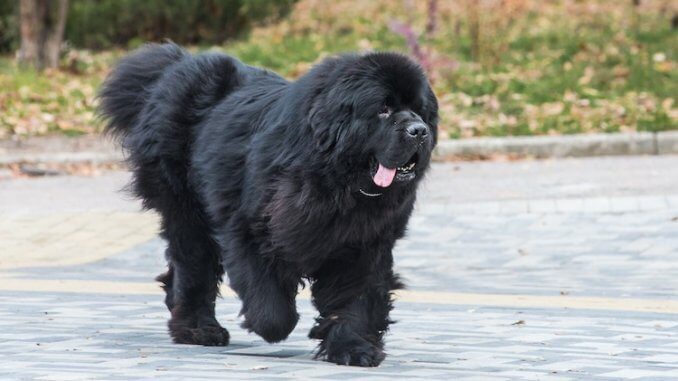
No, that’s not a bear, it’s a Newfoundland dog!
The giants of the retriever world, this is a dedicated and loving dog, perfect for a family with the space to keep one.
Hailing from the area known as Newfoundland in Canada, these loyal dogs were historically used for water work, as well as heavy lifting.
Newfoundlands are a great match for any active family. Despite their giant size, “Newfies” are surprisingly gentle with young children.
This kindhearted temperament means they are often seen in family homes, and sometimes even as therapy dogs. Think this breed could be a match for you?
Keep reading to find out…
TABLE OF CONTENTS
History of the Newfoundland Dog
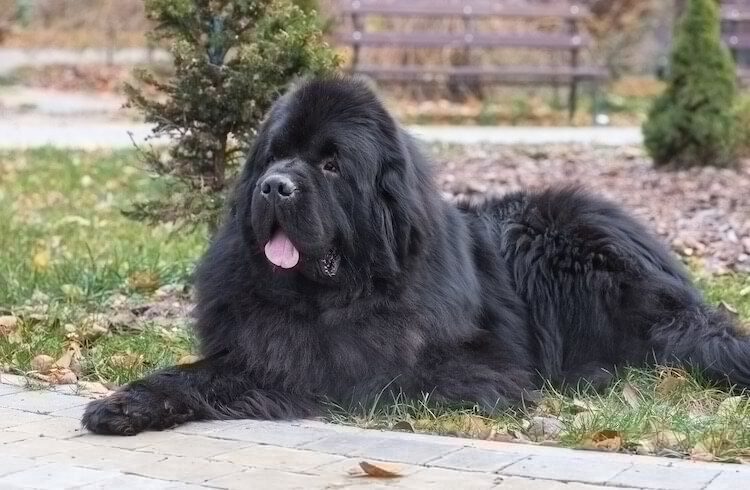
First used by fishermen as lifeguards, there are many stories of brave Newfoundlands saving various people.
The Newfoundland is closely related to other water Retriever breeds such as the Labrador Retriever and the Nova Scotia Duck Tolling Retriever.
Their distinct appearance comes from breeding with Portuguese Mastiffs that came to Canada in the 16th Century.
As of the 16th Century, there were two types of this dog:
- The Greater
- The Lesser
The Lesser was also known as the St Johns Dog, a now extinct Retriever that has influenced many modern breeds.
The Greater bloodline was later renamed to just “Newfoundland”.
In the past, these dogs were used to pull carts and carry equipment.
Recently, he is more commonly seen as a companion pet, although on occasion he has been seen working as a fishing dog and working as a therapy dog because of his loving and affectionate temperament.
Which Kennel Clubs Recognize The Newfoundland Dog?
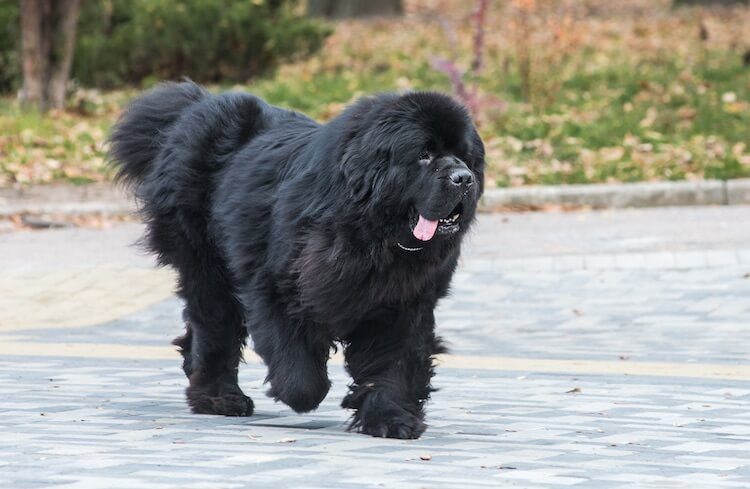
Both the American Kennel Club and Fédération Cynologique International recognize this purebred dog and have been registering them for over a century.
The Newfoundland Club of America is the official breed club.
| Size | 26 to 28 inches |
| Weight | 120 to 175lb |
| Lifespan | 8–10 years |
| Breed Type | Working Retriever |
| Purpose | Families With Large Gardens! |
| Suitable For | Black, Brown, Gray and White |
| Color Variations | Loving, Goofy, Playful and Calm |
| Temperament | Newfs, Landseer Newfoundland |
Five Reasons Why We Love This Breed!
- These dogs are some of the biggest you can find! Generally, these gentle giants stand between 26 and 28 inches and weigh between 120 to 175lb.
- They may be giant, but these dogs are gentle! This breed is world-renowned for their patience and gentle nature.
- These giant dogs have a giant appetite! They need approximately four cups of high-quality food each day!
- This dog was used on both water and land to assist with heavy lifting! They could also be seen as lifeguards, protecting fishermen on their boats.
- These big bears are somewhat unusual in the dog world as the have webbed feet to help them swim.
Newfoundland Temperament
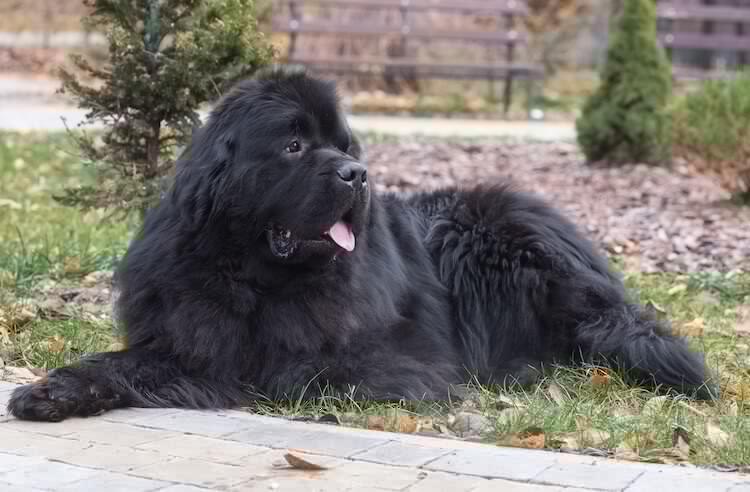
These dogs are often nicknamed gentle giants due to their loving and docile nature.
They are so sweet-tempered that in their breed standard states that any Newfie that is not sweet tempered is disqualified!
As a breed, they are very relaxed.
Generally very easy-going dogs they are very happy to observe whatever is happening.
While inside, they are pretty inactive, they are happy to sit on the couch and watch the world go by.
However, when outside the Newfoundland is an active dog who loves to run and play with their family.
Some of them love a good bark, but there is a lot of variation with this, some will bark at everything, while others will be silent most of their lives.
Is This Breed A Good Family Dog?
| Young Children | |
| Teenagers | |
| Seniors | |
| Other Pets |
This dog breed makes an excellent family pet.
Despite their larger size, they are gentle and kind, getting on well with all members of the family.
However, these giant dogs can cause issues if not taught how to interact with other members of the family, especially younger children.
If you are planning to introduce a Newfoundland into a home with a young child, they should never be left unsupervised
While he would never intentionally hurt a child, his size means that accidents may happen!
Their sheer strength may also make them somewhat difficult to control for senior citizens. As a result, their compatibility should be assessed on a case by case basis.
Because of their friendly personality, generally speaking these dogs have no issues with other pets, including other dogs in the home.
Taking Care of Your Newfoundland Dog
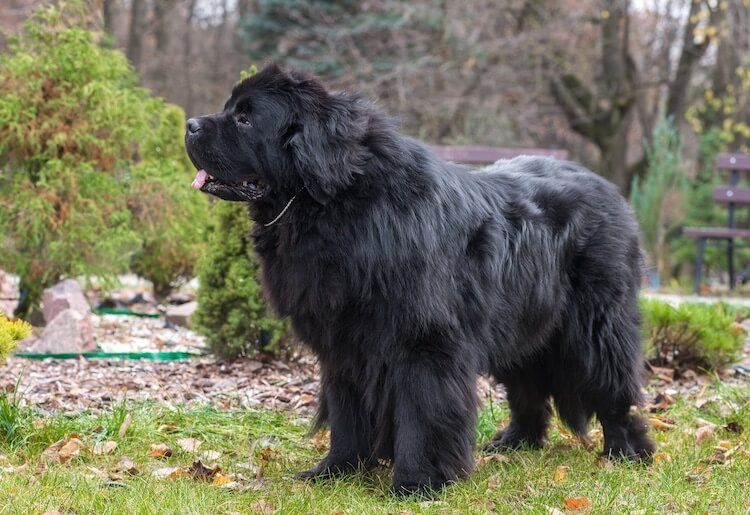
These guys are big dogs. So, any potential owner will need the space to accommodate them.
It is unusual to find these dogs living in a city, instead they are better fitted to a house in the suburbs with a large fenced yard.
How To Feed A Newfoundland
| Daily Food Consumption | |
|---|---|
| Guide | ~1,500 calories |
| Cups of Kibble | |
A Newfoundland dog needs approximately 4 cups of high quality kibble each day.
This will of course vary depending on the height and weight of your dog, as well as the quality of the food you are feeding.
Ideally, their food should be split into two or three evenly portioned meals each day.
This dog breed is very food motivated, they love to eat, especially the occasional snack for good behavior. Be sure to feed them a mix of dog treats along with dog safe fruits and vegetables.
How Much Exercise Do Newfoundlands Need?
| Daily Exercise Requirements | |
|---|---|
| Minutes | 60+ minutes |
| Activity Level | |
| Favorite Exercise | Swimming |
Despite the stoic appearance and lazy indoor temperament, a Newfoundland dog is not a lazy dog breed.
He loves to be at the dog park, playing with his friends. Occasionally, he may enjoy a game of chase or fetch too.
These gentle giants need around 60 minutes of exercise each day. Ideally this should be split into two walks (an hour before or two hours after feeding) to balance out their day.
With their larger size, owners should be careful not to over exercise your puppy, as this can be damaging to their musculoskeletal system.
This breed is happiest when they are in or around water! Take your Newfoundland to places like the dog beach or a lake to allow them to blow off some steam.
How To Train Newfoundlands
As a breed type, they love to learn and are very eager to please, they will happily jump through hoops to see you smile. Here are some puppy training tips for your Newfie.
Always use positive reinforcement training with your dog. They are very loving and social, using aversive methods will ruin the relationship between you and your Newfie (making them less likely to follow your commands).
This breed type is super smart, and consequently you should have no issues teaching him some dog tricks!
One fun trick to teach your Newfoundland is roll over:
- Start with your dog lying down
- Place a treat behind the dog’s neck and encourage the moment over
- The trick is to encourage the movement over, but discourage the dog from standing up
- When the dog rolls over, give lots of praise and the treat
- Repeat
- When your dog is consistently rolling for the lure, progress to a hand signal, and eventually add in a verbal cue
How To Groom A Newfoundland Dog
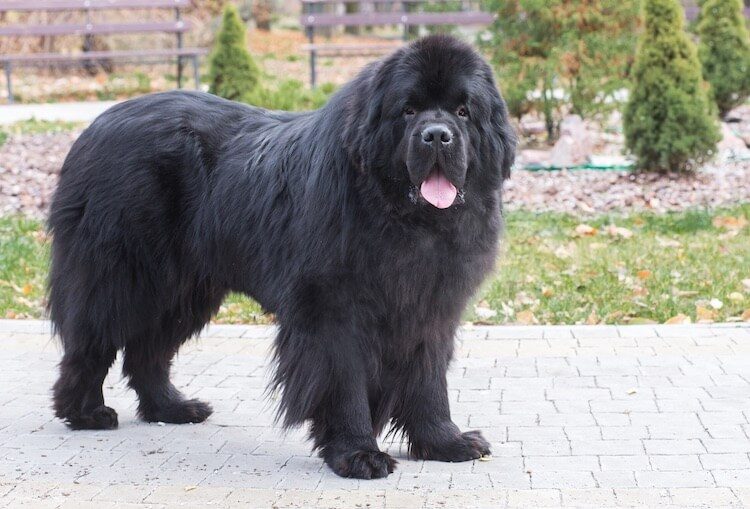
This dog breed is somewhat of a seasonal shedder, shedding more in the springtime than any other season, but they are still heavy shedders all year around.
They will need near daily grooming with a deshedding brush to remove all the loose hair and dirt from their thick coats.
Regular brushing is very important, fur that is not regularly brushed will begin to matt.
Bathing should be done as infrequently as possible, as shampoo tends to dry out his coat and may cause skin problems.
If bathing is absolutely necessary, it should be done with a hypoallergenic shampoo, and the coat should be allowed to dry fully.
This breed is not for the faint hearted, Newfoundland dogs produce a lot of drool!
Owners should be prepared to regularly clean their dog’s face, as well as anything they may sit on.
Known Health Issues
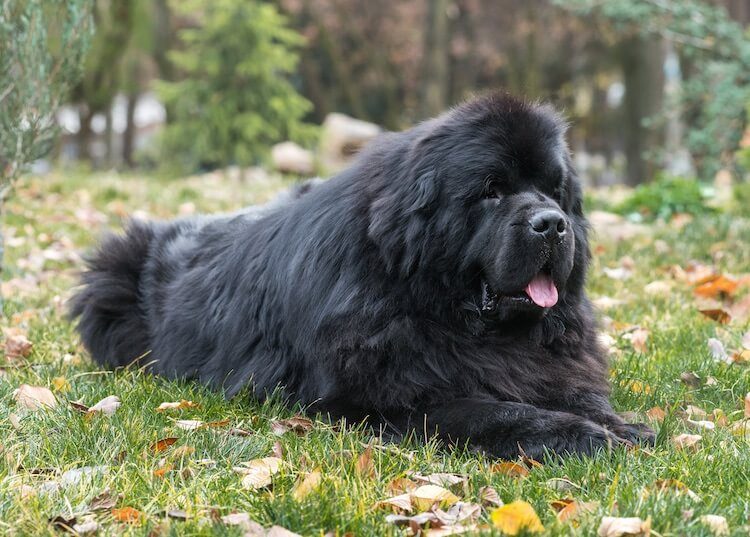
This dog breed is known to be very healthy. However, like most dogs, they are still likely to develop some health conditions over their lifetime.
Being a giant dog breed, there is a high chance for them to develop hip dysplasia.
This is an incorrect formation of the hip joint during development, which can result in arthritis in later life.
Similarly, the Newfoundland dog can develop elbow dysplasia. Like hip dysplasia, this is an incorrect formation of the elbow joint and can lead to arthritis in later life.
They are also prone to developing hypothyroidis (i.e. an underactive thyroid).
This can be identified by a loss or thinning of the coat, excess shedding, weight gain and an inability to tolerate the cold. This condition can be treated by daily medication for the rest of the dog’s life.
If you wish to insure your dog, the average price for cover is between $40 and $60 USD each month. The price will vary depending on the dog’s age and previous medical history.
Breed Appearance: Size, Color and Coat
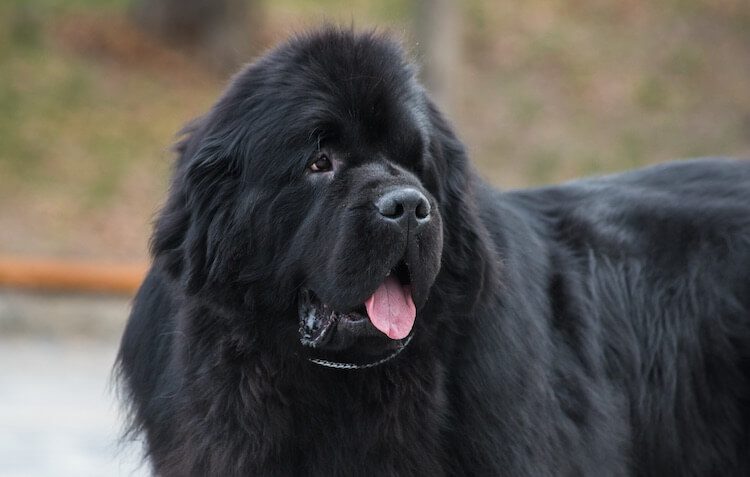
How Big Do Newfoundlands Get?
Females will weigh between 120 and 145lb, and the slightly larger male dogs will weigh between 145 and 175lb.
Occasionally they are bigger than this, the biggest pedigree on record weighed 260lb!
Females and Males tend to be similar heights with both standing between 26 and 28 inches tall. At the shoulder, they are somewhere between 22 and 30 inches tall.
Appearance
The easiest way to explain this dog’s appearance is to imagine a larger, fluffier mastiff-type dog!
They have a bulky but muscular body, a giant head and a thick fluffy tail.
Their head is heavy set, with large ears, eyes and a very droopy jaw! Their eyes must be brown, any other color will exempt them from kennel club registration.
Despite their large size, these dogs are graceful movers and are as graceful in water as on land.
Coat and Colors
This dog will have elements of black, brown, white and gray in their coat. He can be either all one color or bi-colored.
Most commonly, bicolored Newfoundlands will be black and white.
This breed is easily spotted by their huge, fluffy double coat. This is characterized by a dense undercoat with a long, shaggy and rough to the touch outercoat.
Newfoundland Puppy
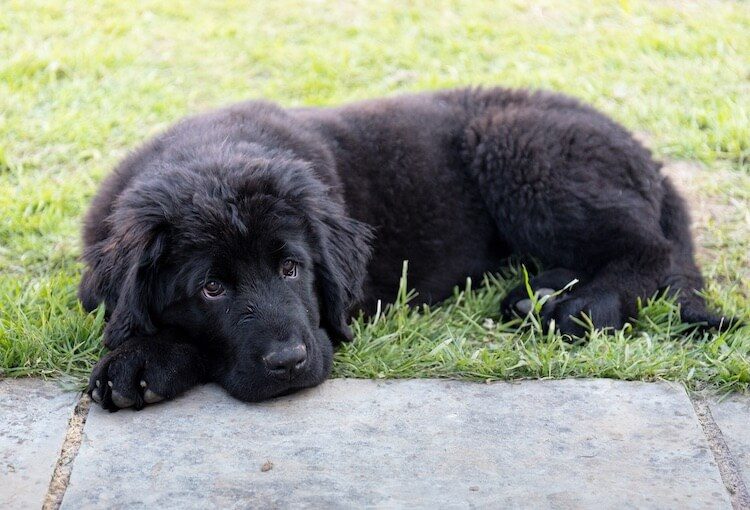
Upon meeting one of these puppies, you will discover they are just little bundles of fur.
On average, a Newfoundland dam will have between 4 and 10 puppies in a litter.
How Much Do Newfoundland Puppies Cost?
This puppy will cost between $500 and $1,500 USD. The more expensive dogs will be from show lines or kennel club approved breeders and have health-screened pedigree parents.
Like all puppies, they should stay with their mum for the first two months of their life. After this, your puppy will be weaned and should be ready to come home.
Where To Adopt
If you would prefer a rescue, there are many national organizations:
- The Newfoundland Club of America has a nationwide rescue network
- Rescue Me! also places this breed into willing rescue homes
Choosing A Breeder
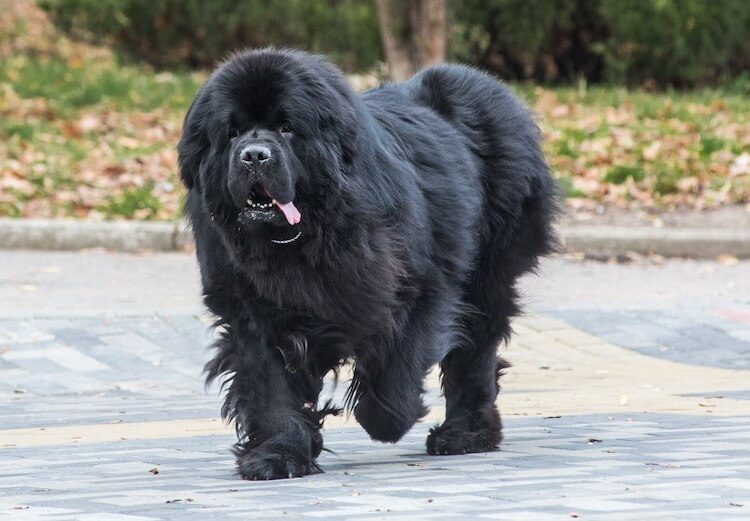
Whilst he is a relatively popular breed, surprisingly there is not a surplus of breeders.
When looking for an ethical and responsible breeder, one of the best places to start is the official kennel club marketplace.
All of the breeders are prescreened against breeding standards. However, these dogs will be expensive because they will be pedigree puppies.
Alternatively, the official breed club have a puppy register, where breeders registered with the club can advertise puppies for sale.
Never buy litters of puppies advertised on online sites such as Preloved or GumTree, as these will often be puppy farm puppies.
When the time comes to meet your puppy, a reputable breeder will be happy for you to meet them and their mother multiple times.
Newfoundland Dog FAQs
- Do Newfoundland dogs shed a lot?
- Is a Newfoundland a good farm dog?
- Are Newfoundlands intelligent?
- Do Newfoundlands like cuddling?
- Do Newfoundland dogs need a lot of exercise?
- Should I get a male or female Newfoundland?
- Will a Newfoundland dog protect me?
- Do Newfoundland dogs bite?
- Do Newfoundlands like other dogs?
- How much do Newfoundlands eat a day?
- Are Newfoundlands good with strangers?
- Do Newfoundlands sleep a lot?
- Can Newfoundlands be left alone?
- What is the rarest Newfoundland color?
- Do Newfoundlands bark a lot?
- Are Newfoundland dogs smelly?
- Are Newfoundland dogs high maintenance?
- Are Newfoundlands lazy?
- How much does a Newfoundland dog cost?
- Are Newfoundlands aggressive?
Summary
The Newfoundland is a one of a kind dog, there are no good alternatives as they are unique in appearance, size and temperament.
In terms of caring for this breed, they are low maintenance in some areas and much harder in others… they require lots of grooming and a reasonable amount of exercise, but on the other hand they are relatively easy to feed!
This dog breed is better suited to a family environment that has the space and energy to handle a dog of their ginormous size!
Their kind nature will shine through and most families are left wondering what they did before their pet.
Do you have a noble Newfie at home? Are you thinking about getting one? Leave us your thoughts in the comments below.

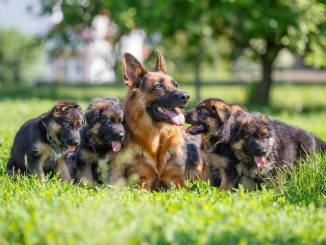


the dog is lovely and i would love to pet one, but no capacity to own.. 🙂
From a Newfie owner they are perfect if you don’t mind hair and drool everywhere all the time but all worth it they are the best cuddles
I have a black Newfie with a white spot on his chest. Buddy is so much a part of my life. He is an excellent dog and at the end of the day, he can make me smile with his exuberant excitement. I love him with all of my heart. He is approximately 16 months old and he weighs 95 pounds. He eats Blue Buffalo & gets Blue Buffalo treats as well as a Pig ear here & there or a calf bone from a cow. He is a big teddy bear and he enjoys being loved on like my children did.